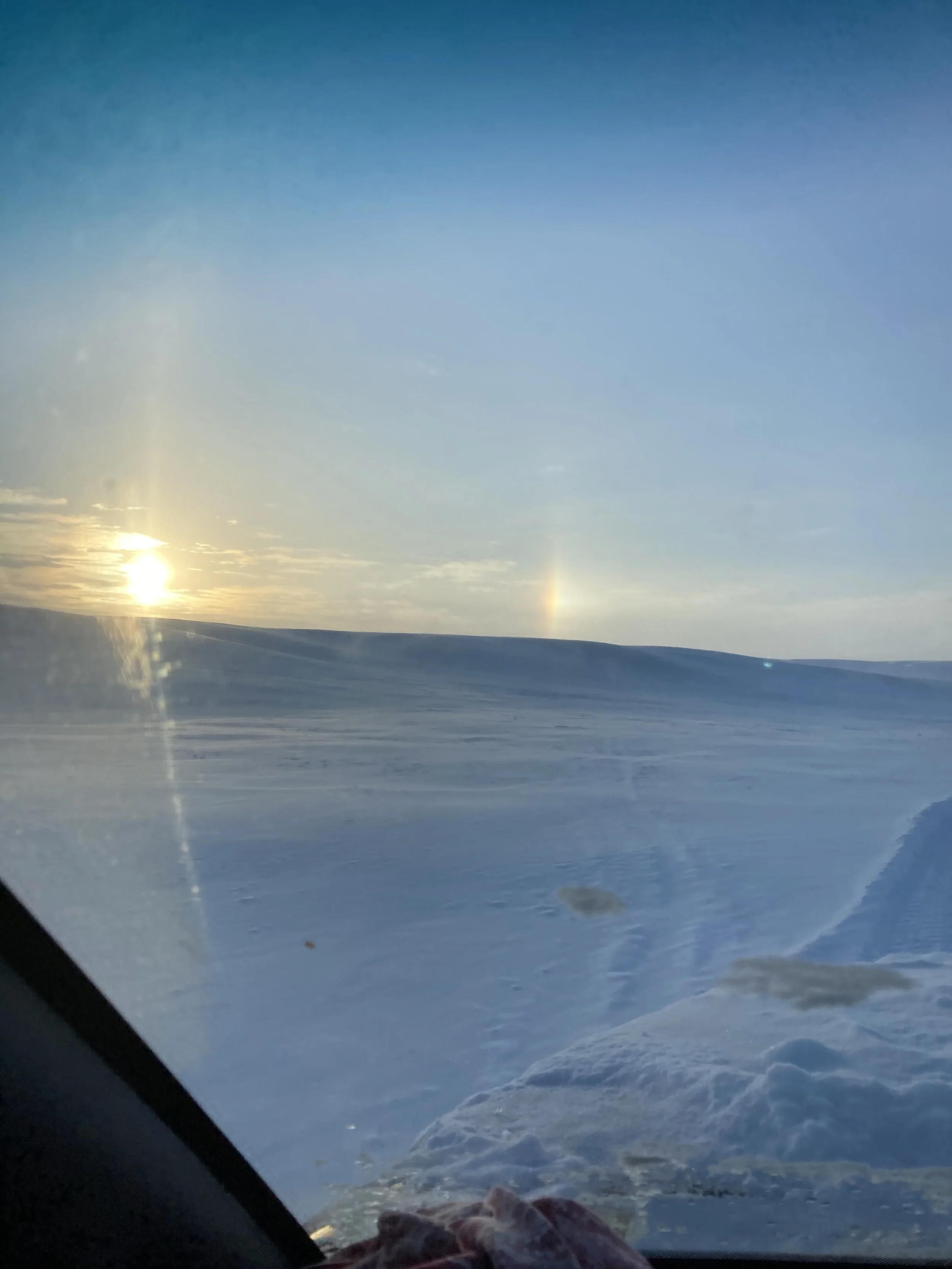A Shrinking Cold
One of my guard dogs chewed on a frozen jack rabbit.
I know the dog didn’t catch the rabbit alive because the rabbit’s ears were standing stiffly, slightly curled.
It must be cold if a jack rabbit froze to death.
I was layered up, chugging along on my John Deere tractor that started once again that morning, smiling under my fleece gator.
My dusty, memory-filled efforts to clean out the shop enough to park the tractor inside had been rewarded.
When the mercury drops to a miniscule red dot on the thermometer, I haul twice as much hay to my cows and sheep, and hope the microbes in their guts wiggle and chew enough to send warmth all the way to their cloven hooves.
Water, food and shelter.
Nothing else matters.
My world shrinks into the security of what must be done.
I’m not frightened. Like others who do this for a living, I’ve faced cold before. In a way, I’m comforted by doing only what needs to be done.
The rest of the world becomes inconsequential.
Newborns are not on their way yet. I don’t have to fight the most powerful force of Nature to keep a wet calf alive.
I make a list so I don’t forget the commitments I made before the artic wave crashed over the prairie. Two days later, I shrug off the missed meeting that did not even niggle a dim flashing reminder in my head.
Instead, I marvel at the shining sun dogs over snow so white that Clorox envies them.
On my way inside to the crackling woodstove, I pass the flatbed pickup, skewed awkwardly.
The practically new front tire is flat on the ground.
I could wait for warmer weather, use a different truck for now, but my other reliable pickup has a low tire, too.
Dusk is coming.
I recruit my daughter, Abby.
Her first job is to air up the low tire – after all, she points out, if a jack slips and injures one of us, we need a way to get to the hospital.
The brittle valve stem cracks.
I offer a quick physics lesson on pliability and temperature and give her a hug.
Now we have two tires to change.
Abby spins the lugs on the flatbed’s tire while I break the lugs on the Toyota.
The flatbed tire is frozen to the wheel.
I pry it with a bar and tap it with a hammer. If I hit any harder I will dent – or maybe even crack -- the rim.
The sun and the temperature drop.
We change the Toyota tire. The flatbed will wait for daylight and a heat lamp.
Abby searches for colleges in the South on her phone.
The next day, the tire shop technician says he has been fighting frozen tires all week.
At least I’m not the only one.
The heaters inside my water troughs can’t compete with the cold.
I tap through the ice every morning and afternoon, chucking 4-inch thick chunks away so they don’t freeze back together within minutes.
In one trough, the water line to the float is horizontal and has a 90-degree elbow. Water won’t drain when the float shuts the valve, a picture-perfect design for repeated freezing.
I fill four milk jugs with hot water and carry them through the snow drifts to the trough.
I think about how to reroute the water line as I trickle warm water over the line. I have plenty of time to redesign while metering out the warm water and watching for the first drop that signals success.
At dusk on the eighth day of below-zero temperatures, I jump in the pickup to check the four troughs, just for peace of mind.
The cows are drinking as the stars begin to shine.
All is well.
